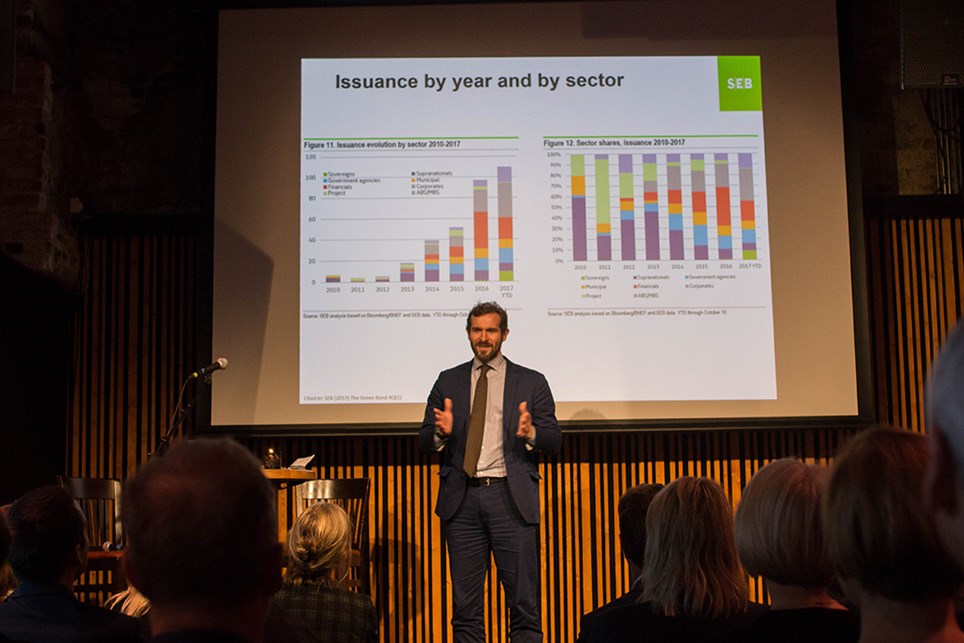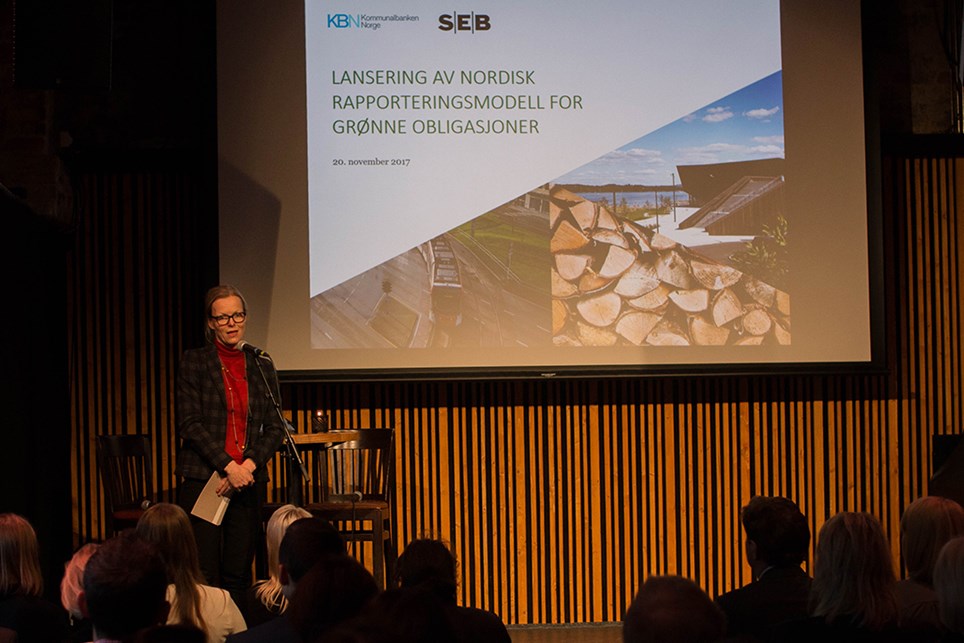Impact reporting in three easy steps
How do you calculate climate risk and the environmental impact of an investment? This was the topic of a recent seminar organised by KBN and SEB.
It would seem from the packed audience for the lunchtime seminar organised by KBN and SEB on green finance and environmental impact reporting at Oslo’s Kulturhuset on 20 November that the finance industry is 'going green'.
Green bonds and climate risk
At the seminar, Ben Powell, recently appointed as Senior Banker for Climate and Sustainable Financial Solutions at SEB, provided the latest news from developments in the green bond market. Another speaker was Martin Skancke from Principles for Responsible Investment and the G20’s Task Force on Climate-Related Financial Disclosures (TCFD), who explained that risk related to climate change and climate politics is now increasingly recognised as a real financial risk by many organisations, but that it is something many, many more should be taking on board.
Nordic launch of a reporting model
The seminar was organised in connection with the launch of the “Nordic Public Sector Issuers: Position Paper on Green Bonds Impact Reporting», a framework for reporting the climate and environmental impact of projects financed through green bonds.
The framework has been produced by KBN in collaboration with nine other public sector issuers of green bonds from the Nordic region, including KBN’s Swedish and Finnish sister organisations KommunInvest and MuniFin. SEB acted as an advisor in relation to the work, along with Credit Agricole CIB and the Nordic Investment Bank.
Dismantling barriers
The purpose of producing the framework is to make the process of impact reporting for green bonds easier to engage with, both for issuers and investors who read the reports. There are some international guidelines on reporting the impact of renewable energy production and energy efficiency measures, for example, but there is little to rely on for issuers that have large and complex portfolios such as KBN’s.
Mats Olausson, Senior Advisor for Climate & Sustainable Financial Solutions at SEB Merchant Banking, emphasised the uniqueness of the document at the seminar, even in an international context, commenting “This is a major step forward for the development of green bonds!”
Reporting principles
Sigbjørn Birkeland, Chief Financial Markets Officer at KBN, presented the reporting framework at the seminar. He explained that the document proposes indicators to report on for eight different project categories: green buildings, energy efficiency measures for existing buildings, renewable energy production, low-carbon transportation, waste management, water management, climate change adaptation measures, and sustainable land use.
The document also sets out four general principles for reporting on green bonds: The impact reported must be based on the share of the project’s total investment cost that has been financed through green bonds, both qualitative and quantitative information on projects must be reported, it is the calculated impact that must be used for reporting purposes, and reporting must be updated yearly. Also, for projects that run for a number of years, reporting must be in terms of the annual impact.
Difficult trade-offs
Sigbjørn Birkeland was open about how creating such a reporting framework involved making difficult choices, for example with regard to an emissions factor for electricity.
“If there is one thing we have learnt, it is that we cannot find an emissions factor that all environmental organisations agree on, as there are countless ways of calculating them”, commented Sigbjørn.
However, he was able to explain that the working group settled on an emissions factor of 380g of CO2 per kWh of electricity. An explanation of this decision is provided in the appendix to the document for those with a particular interest in this area.
Torunn Brånå, Environment and Sustainability Advisor at KBN, added that the framework is a “work in progress”, and issued the following challenge to the audience: “This is a living document that will need to be updated regularly. Please give us your feedback!”
Well-timed
Harald Francke Lund, Senior Advisor at CICERO, congratulated KBN and SEB on the launch of the report: “It is timed well as far as the market is concerned because a lot of investors are now interested in the impact of their green investments. The green bond market has developed simply through someone forging ahead and showing the way. It is important that not only emission reductions but also other indicators that measure the pace of the transition to a low-carbon climate-adapted society are reported. It is really great that the report is built on the principle of openness about the choice of methods used”.
The seminar was also attended by representatives from a number of banks, funds, power companies, communication agencies and Oslo Børs, among many others. The environmental organisation Zero and the WWF were also represented at the event.


